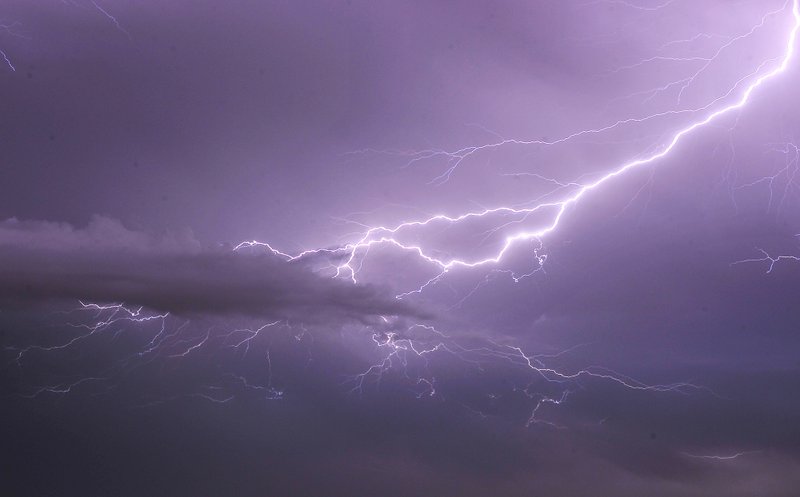High winds and heavy rainfall associated with Hurricane Laura are predicted to move into the state late Thursday and into Friday, raising concerns of farmers as they harvest rice and corn.
More than a half-million people already have been ordered to leave the Gulf Coast as Hurricane Laura makes its way toward Texas and Louisiana. The National Hurricane Center projects that Laura could reach Category 3 status by the time it makes landfall late today or Thursday.
"The Category 3 hurricane means winds at 115 mph and wind gusts possibly reaching 140 mph," said Jeff Hood, a meteorologist with the National Weather Service in North Little Rock. "It will be a devastating storm across the coast."
Wind and rain are expected to begin making their way across Arkansas today, Hood said, but the state isn't expected to see a significant effect from the hurricane's remnants until Thursday.
"As it makes its way across the state it will weaken," he said. "Southern and southwest Arkansas may experience tropical storm force winds, which is 39 mph or greater. Much of the state will see sustained winds of 20 to 30 mph, with some higher gusts in certain areas."
Forecasts call for 4 to 6 inches of rain across the state, with some areas expected to get higher amounts. There is also the potential for isolated tornadoes, the weather service said.
"With the heavy rainfall there is potential for flash flooding, but the storm will be moving through the state so it won't sit here and linger for a long time," Hood said.
The Office of Emergency Management in Miller County sent out a news release Tuesday warning residents about the storm. The release also noted the area has had heavy rainfall recently.
"We could see downed trees due to a saturated ground," Joe Bennett, director of the county's Office of Emergency Services, said in the release. "There is a possibility of 4-6 inches of rainfall depending on how fast the storm moves through our area, so flash flooding could occur between Thursday morning from 7 a.m. to Friday morning at 7 a.m."
The remnants of Hurricane Laura also could be devastating for rice and corn farmers who are trying to harvest their crops, Hood said.
Ryan McGeeney, a spokesman for the University of Arkansas Agriculture Division's research and extension service, said in a news release that the corn harvest has begun throughout the state for producers with grain-drying capabilities.
The U.S. Department of Agriculture reported that about 5% of the state's approximately 640,000 acres of corn had been harvested as of Sunday.
Jason Kelley, an extension wheat and feed grains agronomist for the Agriculture Division, said much of Arkansas' corn crop is in a vulnerable state.
"We are just starting to get going," he said. "The timing of this is about as bad as it can get."
Kelley said the storm has the potential of "lodging" the crops. He said lodging is when crops become saturated with rain and are blown down by high winds.
"The last thing we need is wind because it can blow the crop over, making it where the harvest equipment can't reach it," Kelley said. "This would result in yield loss."
Even lodged corn plants that can be recovered can suffer significant yield and grain quality loss, he said.
Kelley said the state's rice crop is also nearing harvest and is at risk of lodging. If storms knock down some of the rice crop, harvesting might take longer because of rain quality issues and a reduction in yield.
Kelley said only 1% to 2% of the state's approximately 1.2 million rice acres had been harvested as of Monday. Arkansas is the nation's leading rice producer.
"Every year is a challenge, but this spring we already had corn and rice getting planted late due to wet weather," he said. "Some years we would have more harvested products. It seems like every year is something."
If there are sustained high winds across the state, Kelley estimated that farmers could lose around 30% of their yield. He noted that would be a substantial loss in a year when profit margins are already tight.
"I guess it's pretty on par for the course when it comes to 2020," Kelley said. "First we had late planting, then covid and now hurricanes. I guess what we are looking forward to now is 2021."
